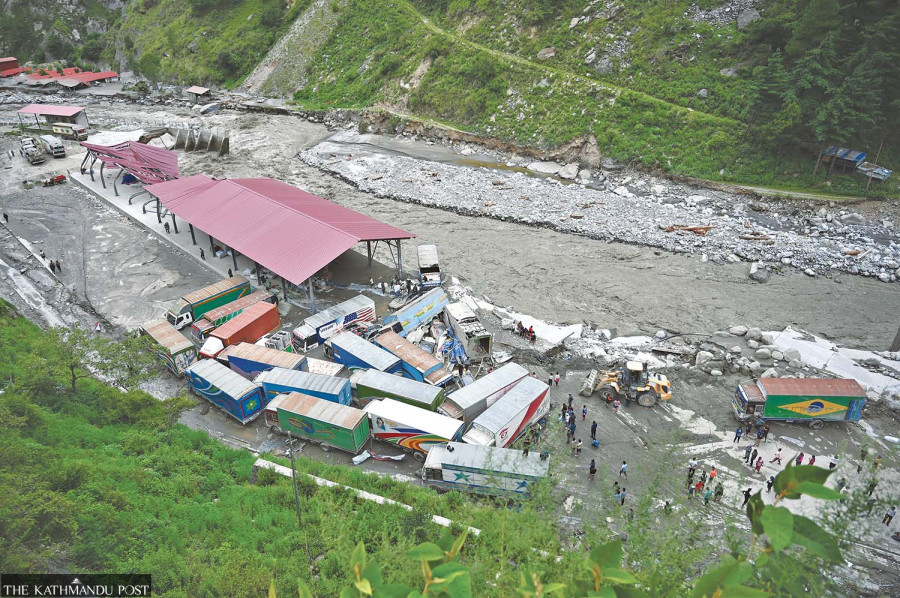Rasuwagadhi Border Remains Closed for Three Months, Trade Disrupted
The Rasuwagadhi customs point, a key trade route between Nepal and China, has remained closed for three months following devastating floods on July 9, 2025, which washed away the bridge over the Lhendhe River. The closure has left traders and customs officials struggling, as both the bridge and the Rasuwagadhi–Syabrubesi road remain impassable due to ongoing landslides.
Construction of a new Bailey bridge, led by Chinese authorities, is still underway. Officials warn that reopening the border before Tihar is unlikely. Before the closure, around 100 container trucks crossed daily, transporting goods such as electric vehicles, garments, apples, and ready-made products from China. With Rasuwagadhi shut, traders have redirected imports via the Korala border in Mustang, causing delays and increased transport costs.
The border closure has also halted revenue collection at the customs office. The office had set a fiscal target of Rs 40.16 billion, but zero revenue has been collected since the start of the fiscal year. Typically busy during festivals, the customs yard now remains silent.
Authorities report that 16 km of road from Syabrubesi to Rasuwagadhi have been severely affected by landslides, with rocks blocking vehicle movement. Efforts are underway to clear the debris, and officials hope to allow one-way traffic soon.
Ministry officials expect that the Bailey bridge will be operational after Tihar, restoring the northern trade route. Meanwhile, weather conditions remain a critical factor, as recent rainfall has hampered repair work.
The prolonged closure of Rasuwagadhi highlights the vulnerability of Nepal’s key trade routes to natural disasters and the urgent need for resilient infrastructure to support cross-border commerce.
Share this content:











Post Comment